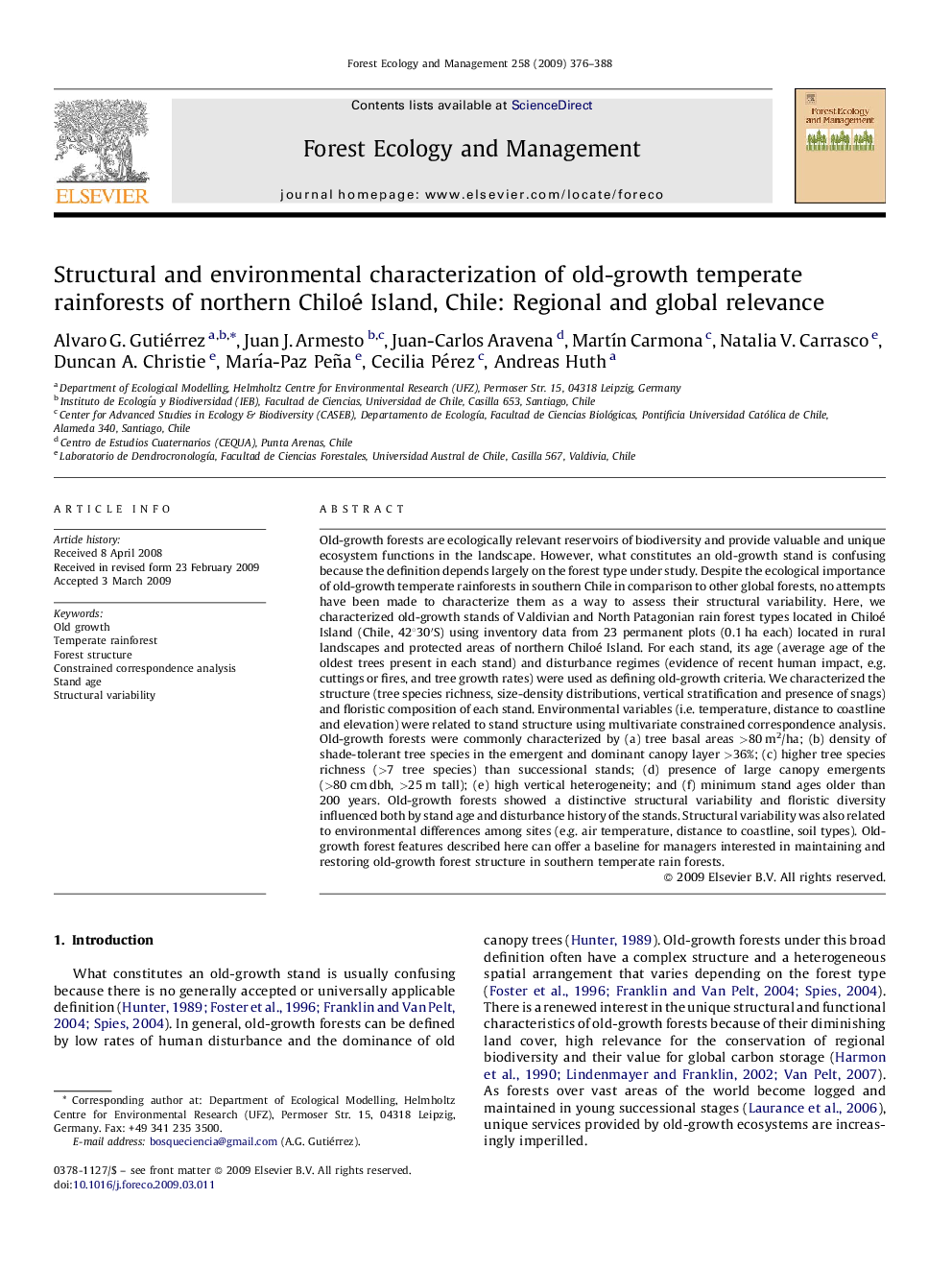| Article ID | Journal | Published Year | Pages | File Type |
|---|---|---|---|---|
| 88649 | Forest Ecology and Management | 2009 | 13 Pages |
Old-growth forests are ecologically relevant reservoirs of biodiversity and provide valuable and unique ecosystem functions in the landscape. However, what constitutes an old-growth stand is confusing because the definition depends largely on the forest type under study. Despite the ecological importance of old-growth temperate rainforests in southern Chile in comparison to other global forests, no attempts have been made to characterize them as a way to assess their structural variability. Here, we characterized old-growth stands of Valdivian and North Patagonian rain forest types located in Chiloé Island (Chile, 42°30′S) using inventory data from 23 permanent plots (0.1 ha each) located in rural landscapes and protected areas of northern Chiloé Island. For each stand, its age (average age of the oldest trees present in each stand) and disturbance regimes (evidence of recent human impact, e.g. cuttings or fires, and tree growth rates) were used as defining old-growth criteria. We characterized the structure (tree species richness, size-density distributions, vertical stratification and presence of snags) and floristic composition of each stand. Environmental variables (i.e. temperature, distance to coastline and elevation) were related to stand structure using multivariate constrained correspondence analysis. Old-growth forests were commonly characterized by (a) tree basal areas >80 m2/ha; (b) density of shade-tolerant tree species in the emergent and dominant canopy layer >36%; (c) higher tree species richness (>7 tree species) than successional stands; (d) presence of large canopy emergents (>80 cm dbh, >25 m tall); (e) high vertical heterogeneity; and (f) minimum stand ages older than 200 years. Old-growth forests showed a distinctive structural variability and floristic diversity influenced both by stand age and disturbance history of the stands. Structural variability was also related to environmental differences among sites (e.g. air temperature, distance to coastline, soil types). Old-growth forest features described here can offer a baseline for managers interested in maintaining and restoring old-growth forest structure in southern temperate rain forests.
